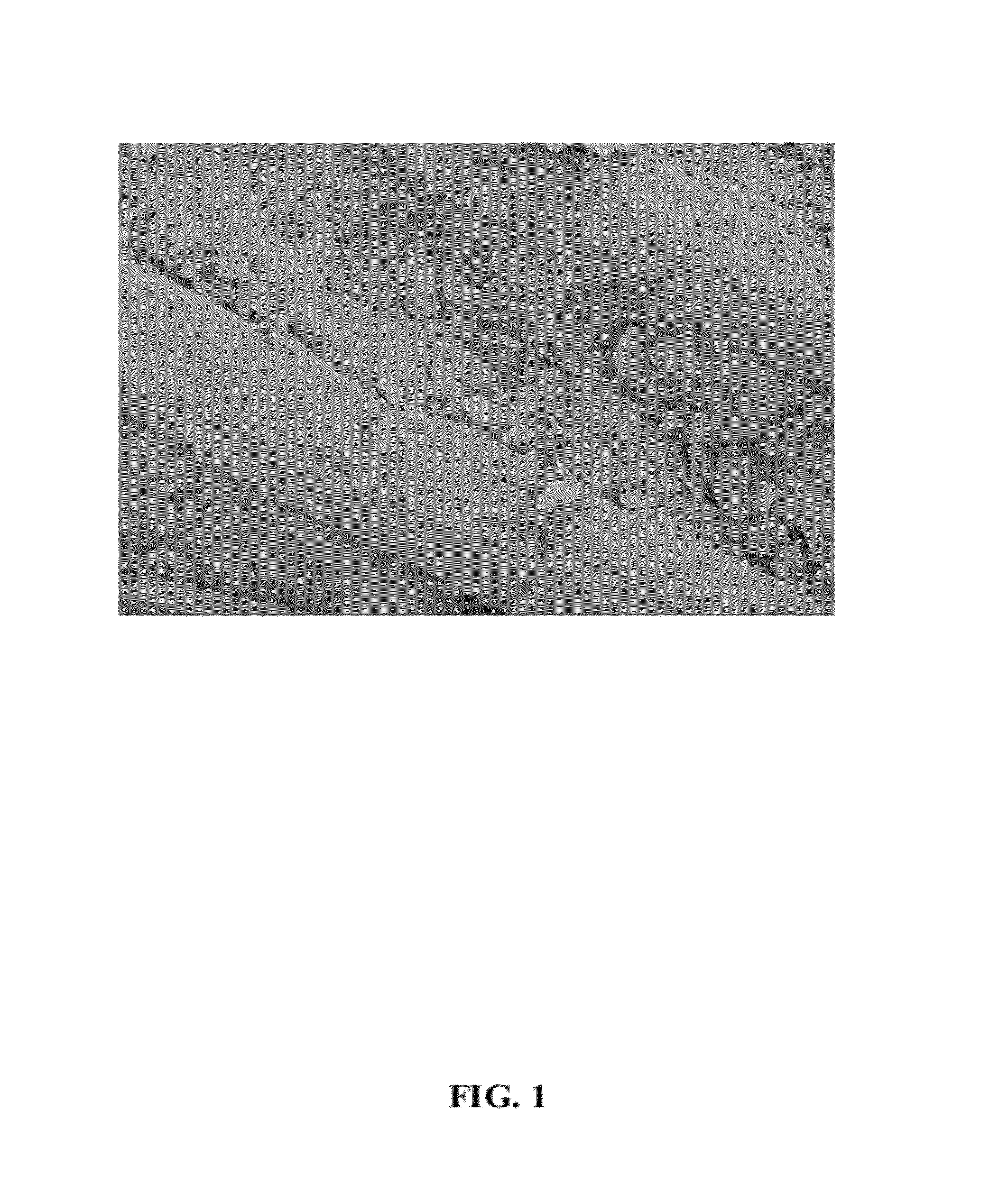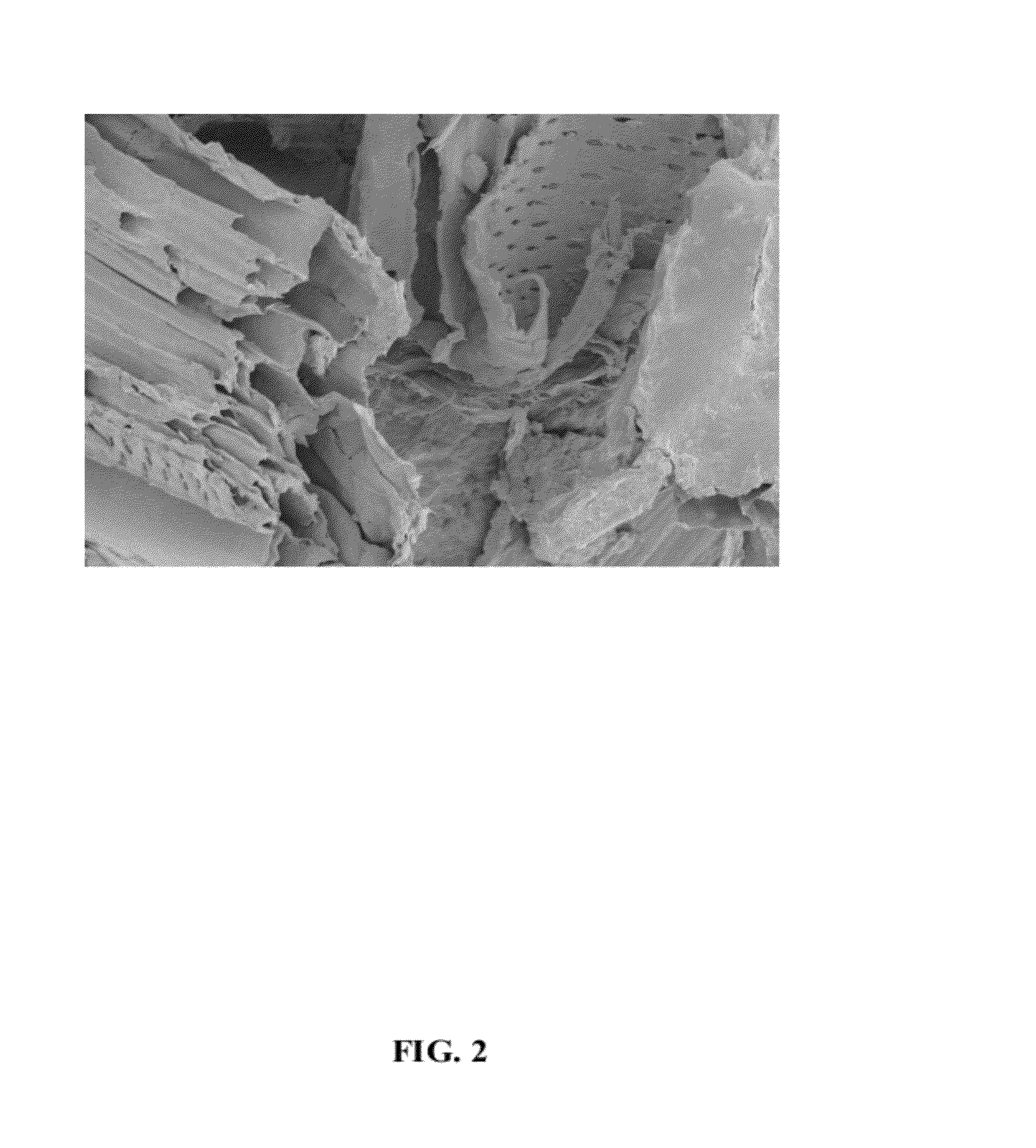Method for processing lignocellulose material
a technology of lignocellulose and cellulose, applied in the field of bioprocessing, can solve the problems of high energy consumption during crushing process, easy rise in motor temperature, long intercooling time, etc., and achieve the effect of low equipment requirements and low processing temperatur
- Summary
- Abstract
- Description
- Claims
- Application Information
AI Technical Summary
Benefits of technology
Problems solved by technology
Method used
Image
Examples
example 1
Method for Preprocessing Lignocellulose Material
[0041]The lignocelluloses materials used herein are maize straws, wheat straws, marc, wood chip, etc. purchased from neighboring areas of Yichang City, Hubei province. The materials are air dried and shaken to remove mud.
[0042]1. Coarse Crushing
[0043]The straws are crushed with a crusher and sieved with 1 mm, 0.5 mm, 0.1 mm and 0.08 mm sieves, and then the granules with a particle size of 100-800 μm are collected.
[0044]2. Rapid Dispersion
[0045]Water is added to the straw granules with a particle size of 80-100 μm according to the ratio of 1:1. The mixture is evenly stirred and pumped into a colloid mill, the dispersing time is an hour, the processing temperature is controlled at 70° C., and the evenly dispersed suspension with a particle size of 40-80 μm.
[0046]3. High-Pressure Homogenization
[0047]The evenly dispersed suspension with a particle size of 40-80 μm is pumped to a high-pressure homogenizer, the homogenization pressure is 50 ...
example 2
Method for Preprocessing Lignocellulose Material
[0050]1. Coarse Crushing
[0051]The apple pomace is crushed with a crusher and sieved with 1 mm, 0.5 mm, 0.1 mm and 0.08 mm sieves, and then the granules with a particle size of 100-800 μm are collected.
[0052]2. Rapid Dispersion
[0053]The straw granules with a particle size of 80-100 μm are added with water according to the ratio of 1:5 and evenly stirred, then the mixture is pumped into a colloid mill, the dispersing time is 2 hours, the processing temperature is controlled at 90° C., and the evenly dispersed suspension with a particle size of 40-80 μm.
[0054]3. High-Pressure Homogenization
[0055]The evenly dispersed suspension with a particle size of 40-80 μm is pumped to a high-pressure homogenizer, the homogenization pressure is 100 atm, the processing time is 1 hour, the temperature is controlled at 85° C., and the high-pressure breaking of the straw cell wall is further realized. The suspension with a particle size of 10-40 μm is obta...
example 3
Comparison between Method for Preprocessing Lignocellulose Material of the Invention and other Methods
[0058]Method 1: Acid Treatment
[0059]Dilute sulfuric acid with volume fraction of 4%, and lignocellulose material and water with a ratio of 1:3 are put into a reaction kettle. After reaction for 10-30 mins at the temperature of 140-160° C., the mixture is filtered using an air pump, the pH value is adjusted to be neutral to yield a lignocelluloses. The lignocellulose is dried at room temperature and then hydrolyzed with an enzymolysis method. The content of sugar in the hydrolysate is determined with a high performance liquid chromatography-evaporative light scattering detection S-method.
[0060]Method 2: Alkaline Treatment
[0061]Sodium hydroxide with volume fraction of 1.0%, and lignocellulose material and water with a ratio of 1:3 are put into a reaction kettle. After reaction for 2.5 hours at the temperature of 70-90° C., the mixture is filtered using an air pump, the pH value of is ...
PUM
| Property | Measurement | Unit |
|---|---|---|
| particle size | aaaaa | aaaaa |
| particle size | aaaaa | aaaaa |
| temperature | aaaaa | aaaaa |
Abstract
Description
Claims
Application Information
 Login to View More
Login to View More - R&D
- Intellectual Property
- Life Sciences
- Materials
- Tech Scout
- Unparalleled Data Quality
- Higher Quality Content
- 60% Fewer Hallucinations
Browse by: Latest US Patents, China's latest patents, Technical Efficacy Thesaurus, Application Domain, Technology Topic, Popular Technical Reports.
© 2025 PatSnap. All rights reserved.Legal|Privacy policy|Modern Slavery Act Transparency Statement|Sitemap|About US| Contact US: help@patsnap.com



